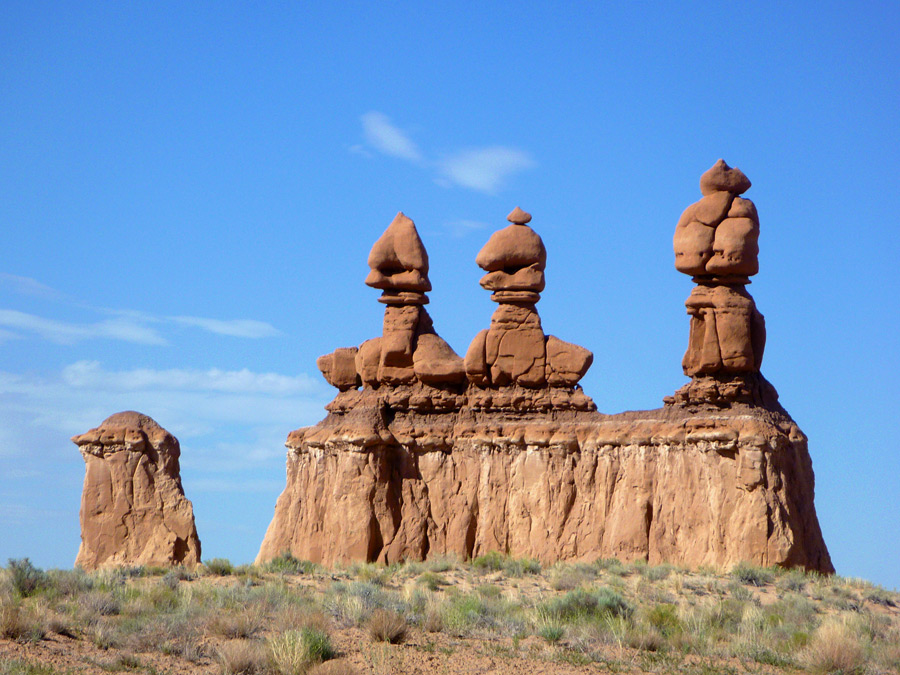Goblin Valley, Utah: Amazing Sandstone Goblins
Goblin Valley State Park in Utah contains a remarkable concentration of hoodoos - mushroom-shaped rock formations locally called "goblins." These distinctive features formed through millions of years of geological processes, primarily the differential erosion of Entrada Sandstone deposited during the Jurassic period (approximately 170 million years ago).
The hoodoos range from 1 to 10 meters in height and develop their characteristic shape through a specific erosion pattern: a resistant caprock of harder sandstone protects underlying softer layers from weathering. This creates the striking mushroom-like profiles as surrounding material erodes at faster rates.
 |
| Colorful sandstone goblins in Goblin Valley, Utah. |
The goblins are composed of Entrada Sandstone, deposited approximately 170 million years ago during the Jurassic period. This sandstone formed in a transitional coastal environment where ancient sand dunes met tidal flats. The rock consists of fine-grained sediments, including sand, silt, and clay, layered with siltstone and shale.
Iron oxide (hematite) gives the sandstone its reddish hue, while bands of white gypsum and green clay clasts create visual contrast. Unlike the massive sandstone layers in nearby Arches National Park, the Entrada here exhibits weaker stratification due to its mixed tidal and dune origins.
 |
| Sandstone goblin formations in Goblin Valley State Park, Utah. |
Key Processes Shaping the Goblins
Spheroidal Weathering: Vertical fractures (joints) in the sandstone allowed water to infiltrate and erode the rock. Corners and edges weathered faster than flat surfaces, rounding the formations into spherical shapes.
Differential Erosion: Softer siltstone and shale layers beneath harder sandstone caps eroded more rapidly, forming the distinctive mushroom-like profiles. Wind abrasion, rainwater, and freeze-thaw cycles (water expanding in cracks during freezing) further refined the shapes.
Tectonic Uplift: The San Rafael Swell, a dome-shaped uplift caused by tectonic activity during the Laramide orogeny (40–70 million years ago), raised the Entrada Sandstone to the surface. Without this uplift, the rock layers would remain buried beneath younger deposits.
Stratigraphic Sequence
The park’s exposed Jurassic-age rock layers include (from oldest to youngest):
Entrada Sandstone: Forms the goblins; characterized by cross-bedding from ancient dunes and tidal flats.
Curtis Formation: A thin, green-gray limestone layer deposited in a shallow marine environment, capping some formations.
Summerville Formation: Composed of gypsum-rich mudstone with alternating white and brown bands, indicative of arid coastal plains.
Morrison Formation: Known for dinosaur fossils in other regions but less prominent here, consisting of fluvial (river-deposited) sediments.
 |
Sandstone formations resembling goblins in Utah's Goblin Valley State Park. |
Visitor Guidelines
- Optimal Visitation: Spring (March–May) and fall (September–November) avoid extreme summer heat and winter cold.
- Activities: Explore trails like the Carmel Canyon Loop or venture into Goblin’s Lair, a slot canyon.
- Preservation: Stay on marked trails to prevent accelerated erosion; climbing on goblins is strictly prohibited.









